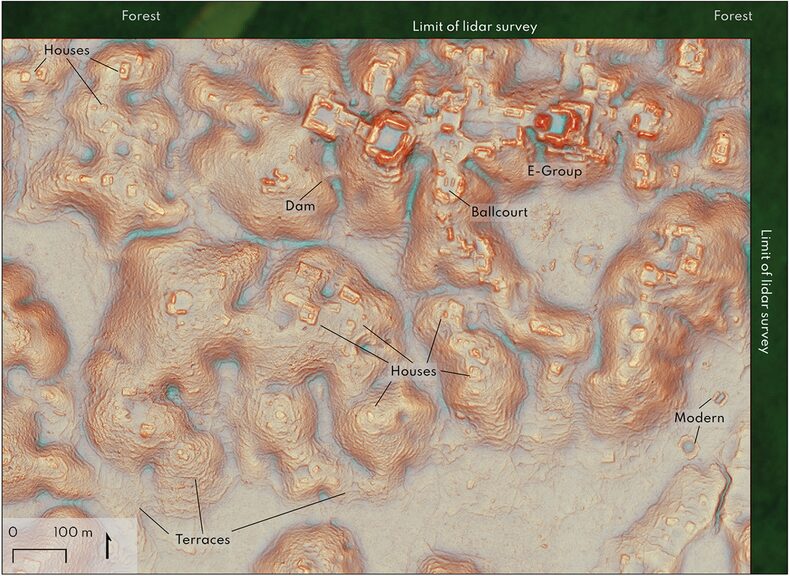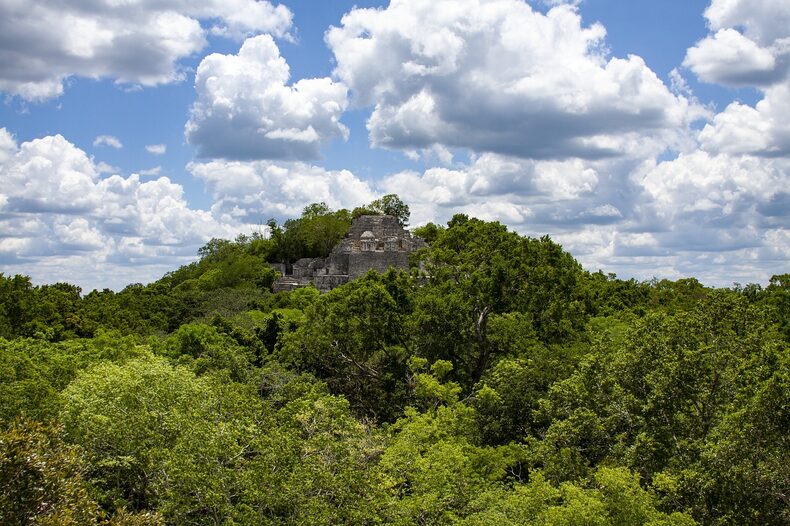The city, named Valeriana in honor of a nearby lagoon, presents the same characteristics of a “classic Mayan political capital,” the researchers point out.
A huge city Maya which was hidden for centuries under the jungle from the state of Campeche, south of Mexico was discovered by a team of international archaeologists.
This is Valeriana, an ancient complex that has more than 6,000 Mayan structures, such as pyramids, sports fields, roads and even amphitheaters . Researchers have suggested that this is the second most important discovery in terms of density, the first being that of Calakmul.
The discovery, published in the journal Antiquity happened thanks to a technology called Lidar, which uses the emission of a laser pulse to measure and detect surfaces at great distances.
How a student discovered a Mayan city
As reported by BBC , Luke Auld-Thomas doctoral student at Tulane University in the United States was searching the Internet when he stumbled across clues to the existence of Valeriana.
“I came across a laser survey done by a Mexican environmental monitoring organization,” Auld-Thomas said.
When processing the study data, the researcher and his colleagues decided to focus on 129 kilometers in east-central Campeche, where the presence of Mayan remains had not been studied. There, they discovered something that the study experts had ignored: a large city that may have had up to 50,000 inhabitants in its golden age, between 750 and 850 AD
The hidden resort was named Valeriana, after a nearby freshwater lagoon.

What Valeriana, the Mayan city hidden in the jungle, looks like
According to the researchers, Valeriana had the same characteristics of a “classic Mayan political capital”.
Covering an area of approximately 16.6 square kilometers, the site had two main centers, a reservoir, squares with pyramid-shaped temples and a large field where residents played a ball game, the study suggests. A little further from the city center, terraces and houses were discovered, suggesting a large urban expansion.
Auld-Thomas and his colleagues discovered that in this Mayan city there were 6,764 buildings and it is the second most important site in terms of density of structures, surpassed only by the famous archaeological site of Calakmul.
Other experts, such as Professor Elizabeth Graham of University College London, have suggested that the discovery provides further evidence that the Mayan civilization lived in large, complex cities rather than isolated villages.

What caused Valerian’s end
For the moment, it has not been possible to elucidate the causes of the disappearance or abandonment of this city. However, the researchers suggest that this may have been influenced climatic factors .
Specifically, the study indicates that the end of the Mayan civilizations, since 800 AD. C., allegedly occurred because their cities were so populated that they were unable to overcome the effects of climate change, such as drought.
Valeriana is located just a 15-minute walk from a road close to Xpujil a population inhabited mainly by descendants of the Mayans. Researchers believe it is only hidden “in plain sight” and, although there are no known photos, they think it is possible that locals knew there were ruins hidden in this area.
Source: Latercera
I am David Jack and I have been working in the news industry for over 10 years. As an experienced journalist, I specialize in covering sports news with a focus on golf. My articles have been published by some of the most respected publications in the world including The New York Times and Sports Illustrated.


